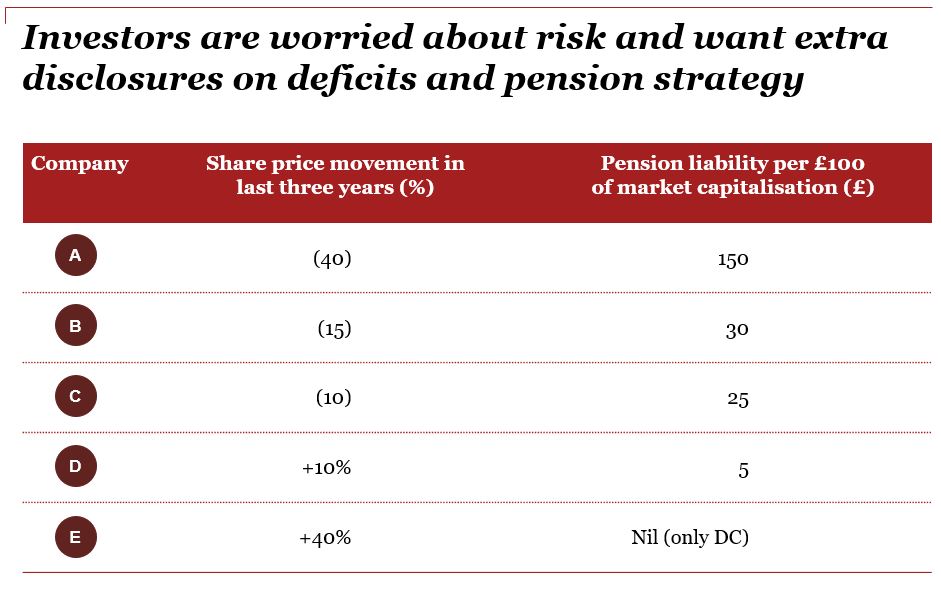From the blog: Many investors, like most people, do not really understand pensions. While there is now a lot of pension information in financial statements, unless you happen to be sitting next to an actuary it can be a bit of a blur.
It is not surprising that the natural response from uninformed investors is to run as far away as possible from defined benefit pension risk, especially where the numbers are big.
It is not surprising that the natural response from uninformed investors is to run as far away as possible from defined benefit pension risk, especially where the numbers are big.
PwC research shows that the share price of one company rose by more than 40 per cent over the past three years, while another company’s share price fell by 40 per cent – even though they were in the same industry and were obvious competitors.

Source: PwC
The main difference between these two companies was that the one with the falling share price had a DB pension plan with liabilities much larger than its market capitalisation, whereas the other company only had a defined contribution scheme. There were similar results when we looked at other companies in this industry.
Reviewing assumptions
Corporations who do not wish to put their head in the sand react in two different ways. The first is to review whether the assumptions remain appropriate.
There is a range of acceptable actuarial assumptions that can be used for calculating the pension scheme liabilities for compliance with International Financial Reporting Standards.
The range looks narrow at first sight but the impact of moving the assumptions can be huge. For example, increasing the discount rate assumption under IFRS by 20 basis points (0.2%) can typically reduce the disclosed pension liabilities in a £1bn pension fund by £40m.
Companies have also been updating their assessment of how long they expect their pensioners to live, in light of new evidence showing that we may not live quite as long as we originally thought. This can further reduce liabilities by £30m in a £1bn pension scheme.
These refinements to the assumptions are acceptable so long as they can be shown to be both compliant and a better approximation than past estimates.
Give investors more helpful information
The second reaction is to improve the pension disclosures in the financial statements by adding information that can give investors a better understanding of the pension risks beyond the standard requirements.
The investment community tells us investors want more up-to-date information on expected future cash contribution levels, together with details of how sensitive these contributions are to changing market conditions.
Investors would also value an explanation of what the company is planning to do to manage the pension risk.
Ultimately, it is the company’s decision on how to provide more helpful disclosures to investors, but they should expect to be punished if they are too shy with giving information away.
Brian Peters is a pensions partner at PwC














